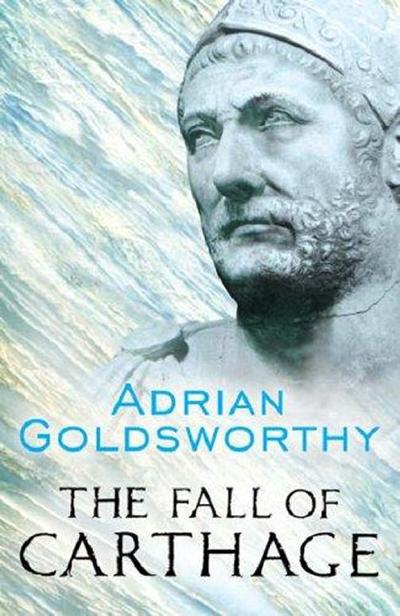The Fall of Carthage


| Published: | 2007 |
| Tags: | Military, Non Fiction Militaryttt Non Fictionttt |
SUMMARY:
“Adrian Goldsworthy is one of the best young historians writing today.” —John KeeganThe Fall of Carthage was the greatest conflict of the ancient world, and thanks to one of the finest historians of our time, this sweeping saga comes to life anew for modern audiences. The cast of endlessly fascinating characters includes the generals Hannibal and Scipio, as well as treacherous chieftains, beautiful princesses, scheming politicians, and tough professional warriors.

| Published: | 2007 |
| Tags: | Military, Non Fiction Militaryttt Non Fictionttt |
“Adrian Goldsworthy is one of the best young historians writing today.” —John KeeganThe Fall of Carthage was the greatest conflict of the ancient world, and thanks to one of the finest historians of our time, this sweeping saga comes to life anew for modern audiences. The cast of endlessly fascinating characters includes the generals Hannibal and Scipio, as well as treacherous chieftains, beautiful princesses, scheming politicians, and tough professional warriors.
The Roman Army at War, Roman Warfare, Cannae, In the Name
of
Rome
and
Caesar: The Life
of
a Colossus,
which has been selected by the Society for Military History for the Distinguished Book Award for biography and war memoirs. He is now a full-time author.
Caesar: The Life of a Colossus
In the Name of Rome
Cannae
2 6 5-1 4 6
BC

A PHOENIX PAPERBACK
The Punic Wars
This paperback edition originally published in 200
3 in Cassell Military Paperback
Designed by Gwyn Lewis
9
Introduction
12
The Opposing Sides
25
BC
The Outbreak of War
65
The Land War
76
The War at Sea
96
The End
128
Causes of the Second Punic War
143
Invasion
167
Cannae and the Crisis for Rome
197
The War in Italy, 216-203
BC
222
Spain, Macedonia and Sicily
245
The Rise of Scipio, 210-205
BC
269
Africa
286
Rome, the Beginnings of Empire
310
WAR
149-146
BC
'Delenda Carthago'
331
The Third Punic War
340
The Legacy
357
369
Chronology
392
The Republican Political System
400
APPENDIX 2
The Consular Army
402
Index
403
BC
14-15
Carthaginian North Africa
27
The Italian Peninsula
37
Sicily
66
BC
110
The Battle of Drepana, 249
BC
119
Spain
146
B
c
174
The Battle of Lake Trasimene, 217
BC
186
The Battle of Cannae, 216
BC
201
254
The Siege of Syracuse, 214-212
BC
262
The Storming of New Carthage, 209
BC
272
The Battle of Ilipa, 206
BC
280
The Battle of Zama, 202
BC
301
The Siege of Carthage, 149-146
B
c
342
Gallic Wars
and Passives, Subjunctives and Ablative Absolutes is now increasingly uncommon. I am probably one of a relatively small minority in my generation who attended a school where Latin was compulsory from the age of nine. I can still remember toiling my way through a passage in my first Latin textbook (and so using only a few simple tenses) which recounted the story of Regulus keeping his oath even though it meant death by horrible torture. Such things were rare in the late
Spartacus
or
Ben-Hur
are far more likely to prompt a response than mention of Polybius, Livy or Tacitus. A reversal of this trend seems extremely unlikely, but it is clear that interest in the long-distant past remains, evidenced by the regular appearance of television documentaries featuring history and archaeology. There are several reasons for this continued attention. The classical world witnessed many intensely dramatic events and was peopled with remarkable personalities, charismatic individuals whose careers were often both heroic and tragic. It is, in short, the source of many good stories which still bear retelling. Its influence, along with that of Christianity, also did more than anything else to shape the culture of today.